Geomaterials Research Lab and Equipment
The Geosystems Porous Media Research Laboratory is equipped with a variety of equipment for conducting element-level testing on soils and rocks as well as building materials and extraterrestrial regolith simulants. A variety of physical modeling and field and in-situ testing devices are also available. State-of-the-art equipment includes automated permeability, consolidation, direct shear and triaxial devices; cyclic triaxial; calibration chambers fitted with a miniature piezocone; high-pressure, high-temperature Autolab device suitable for rocks; automated torsional ring shear device; automated surface permeameter; acoustic sensing including bender elements; X-ray micro-CT; small geotechnical centrifuge; automated borehole shear test device; and terrestrial LiDAR.
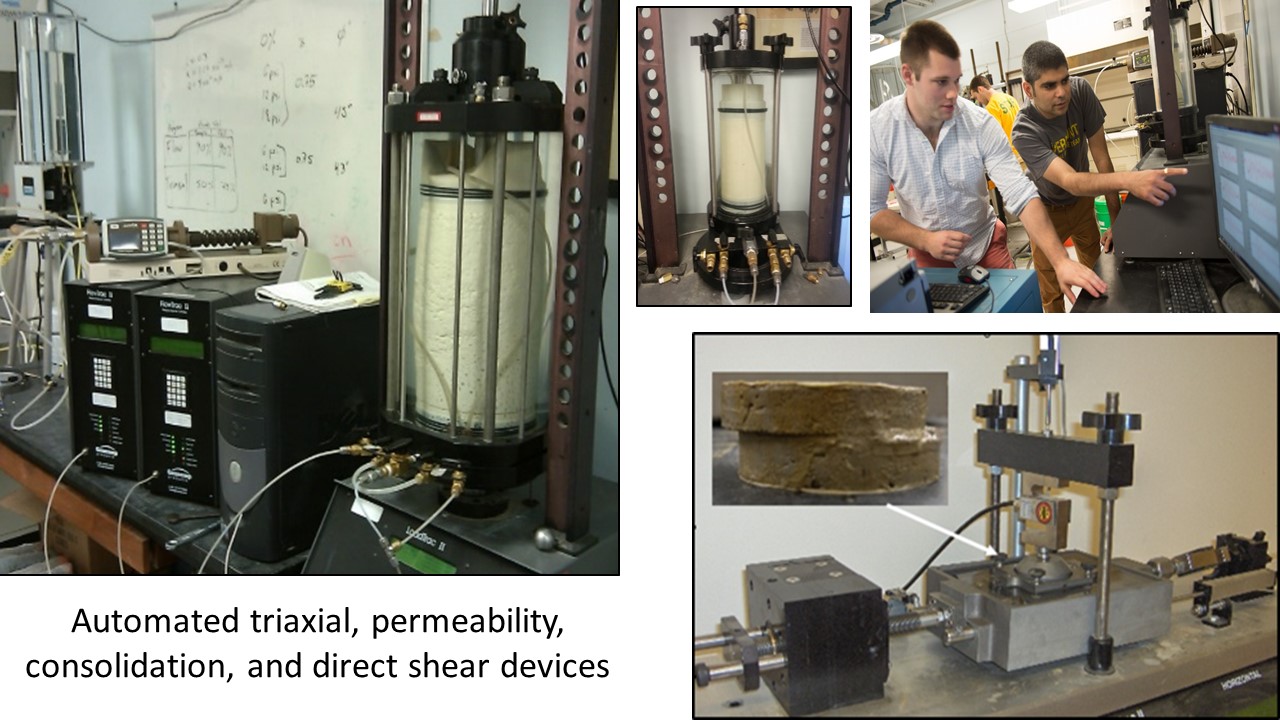
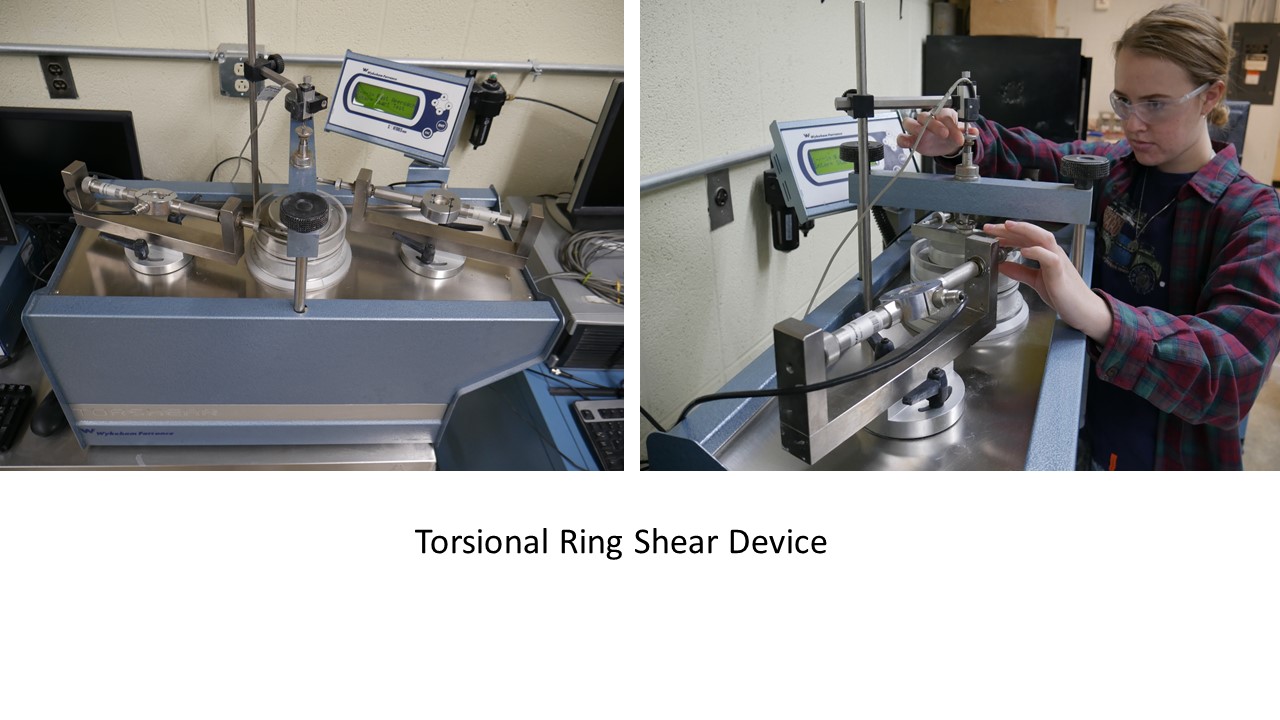
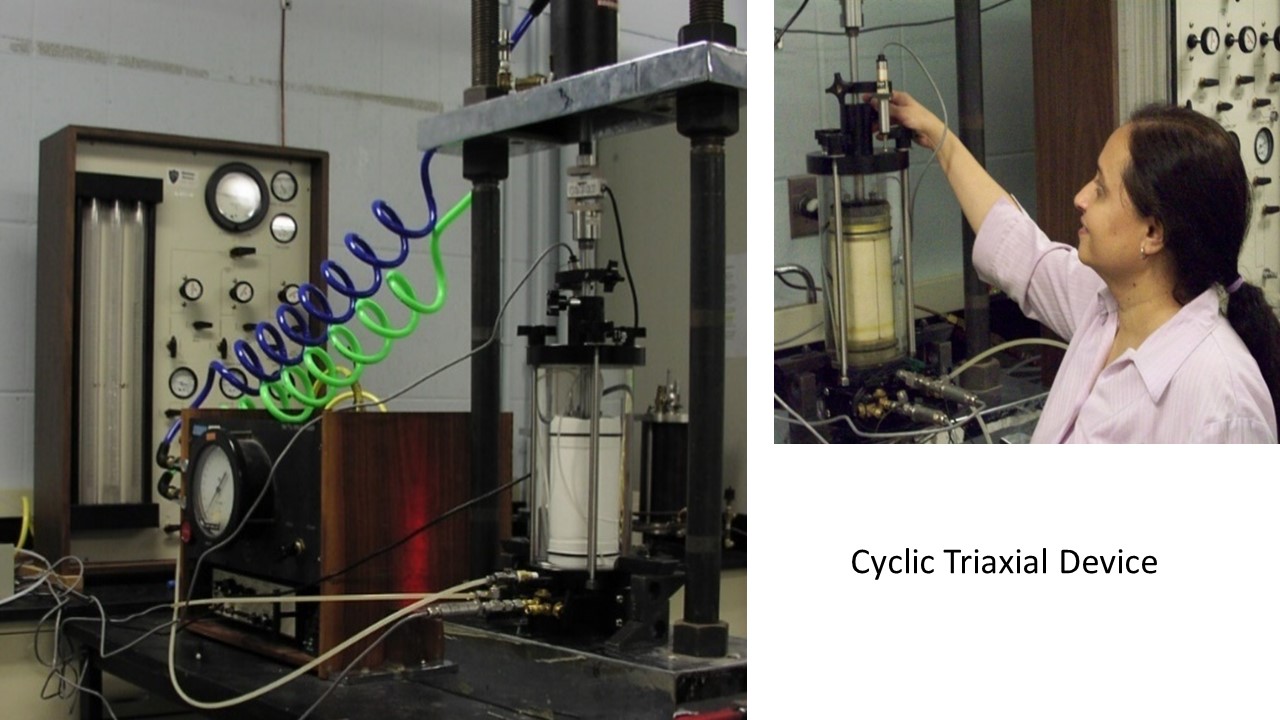
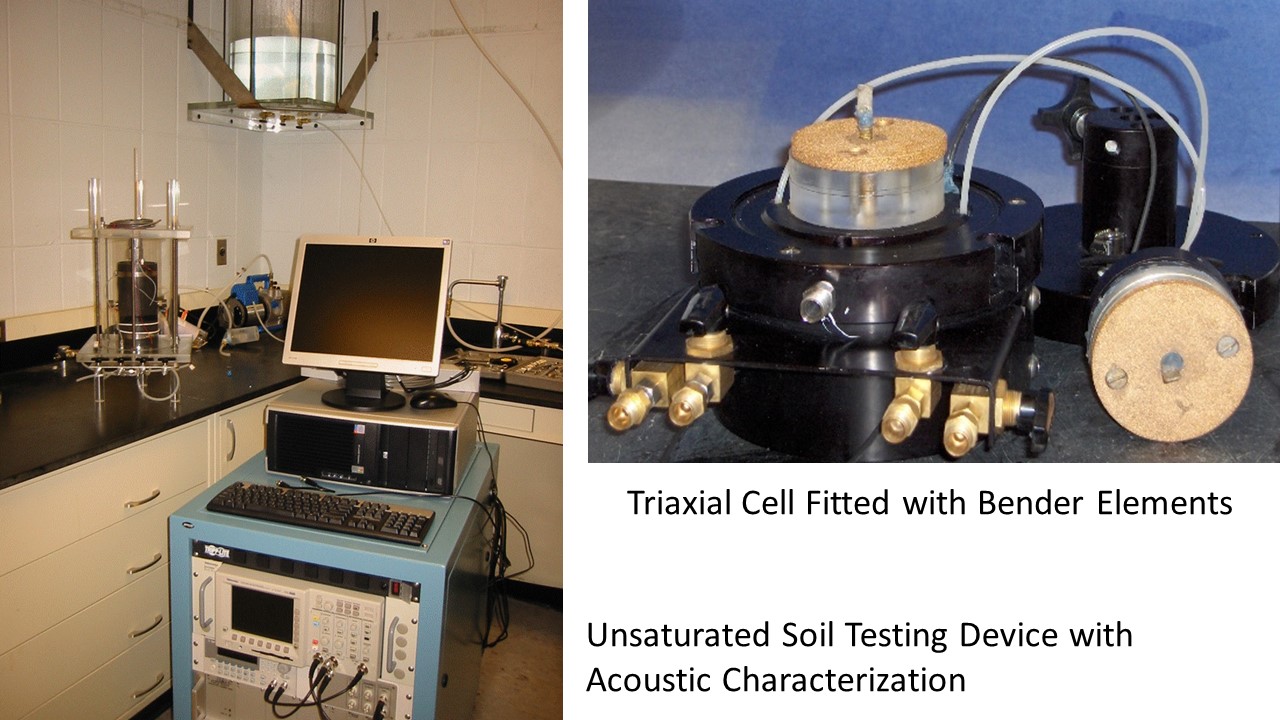
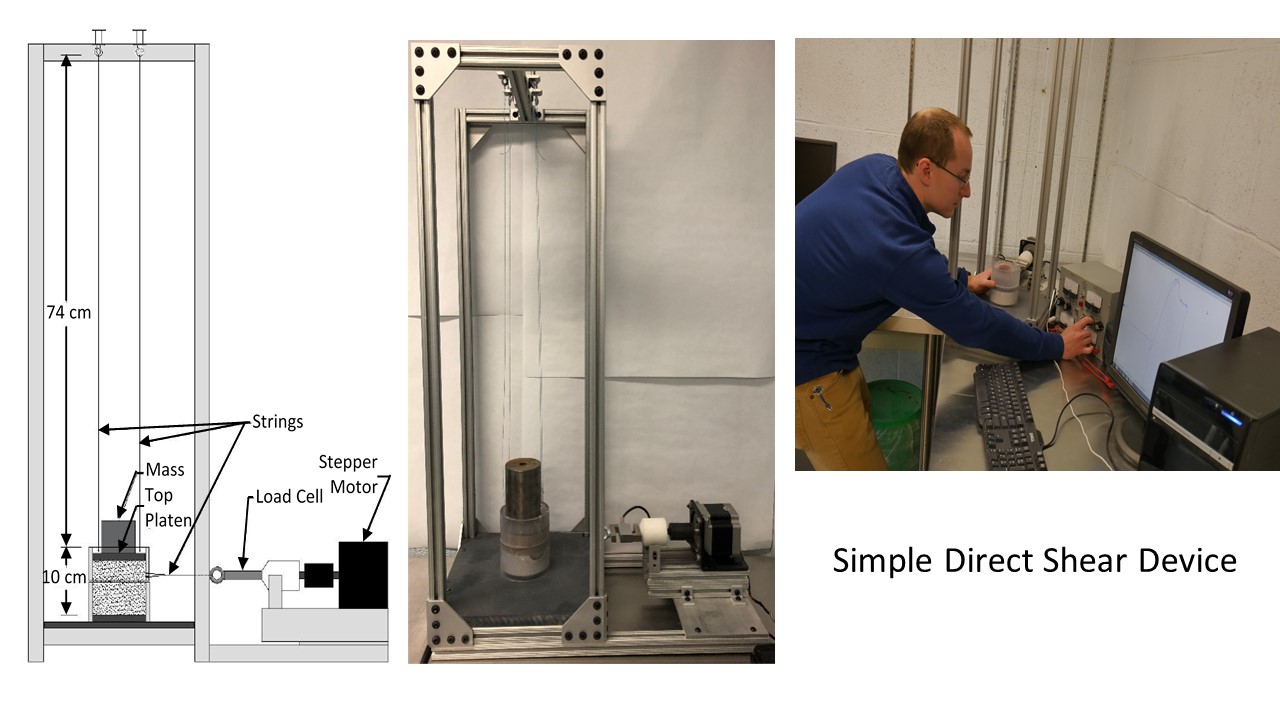
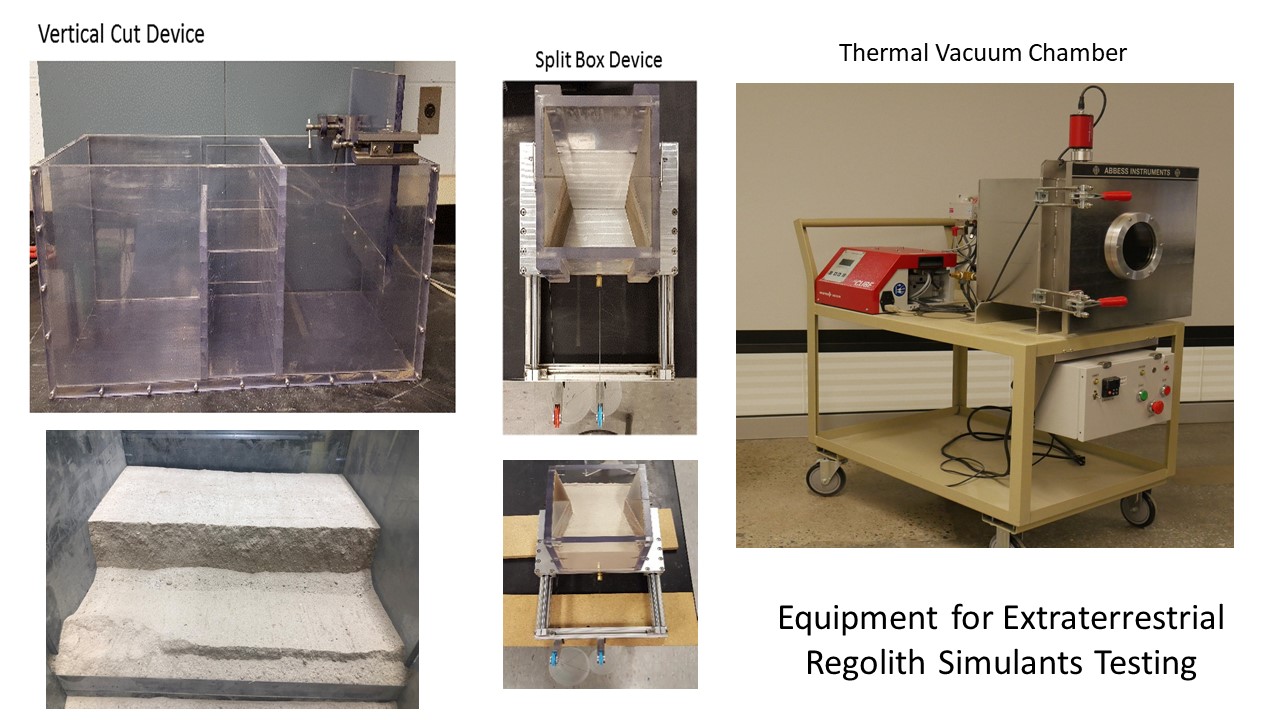
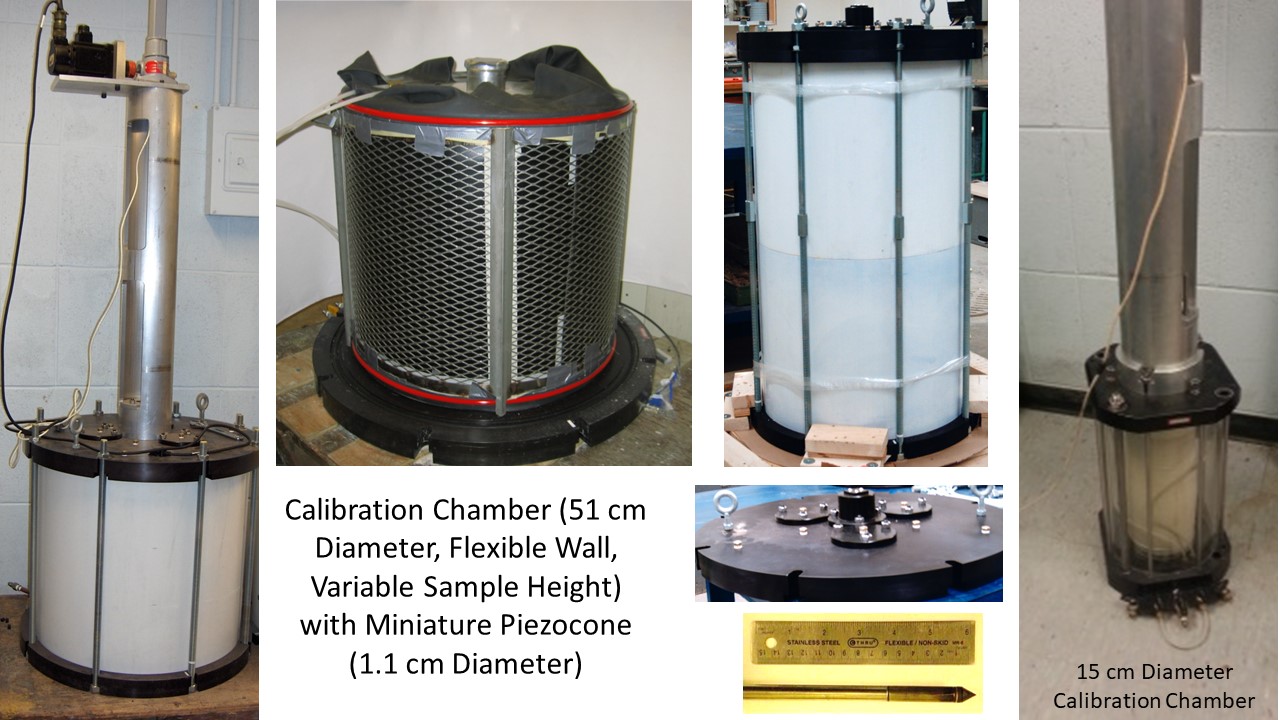
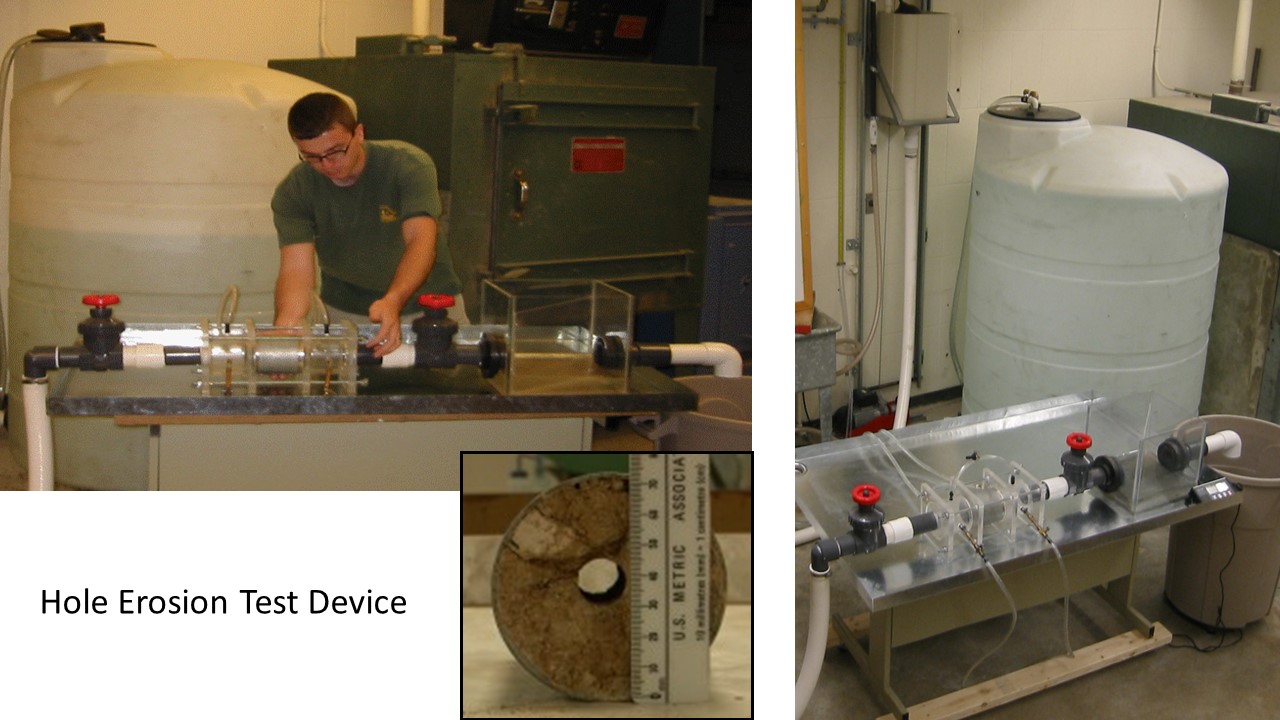
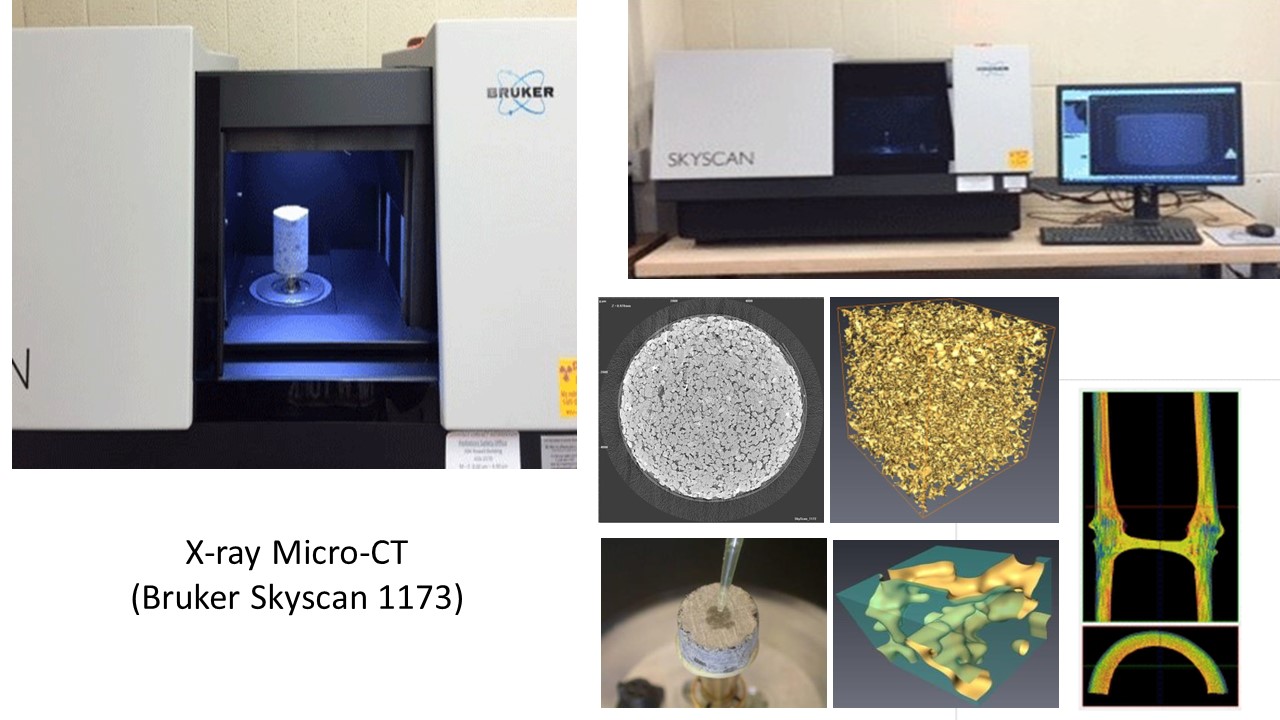
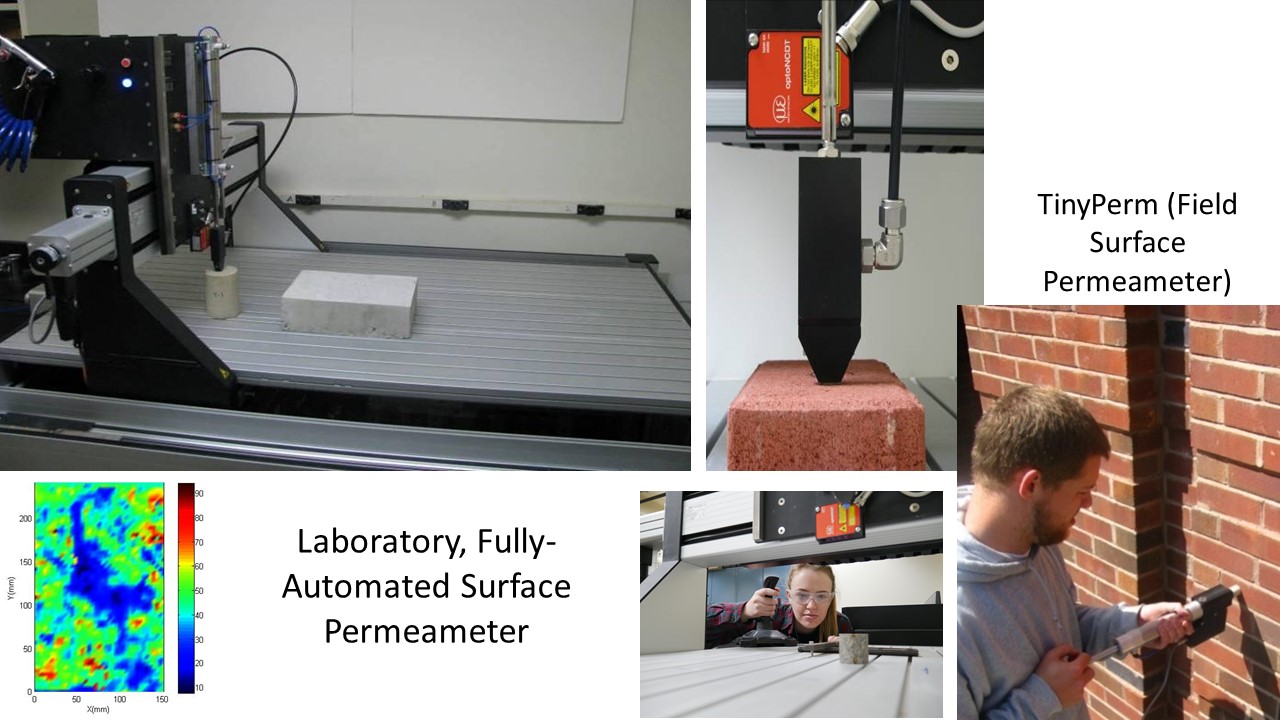
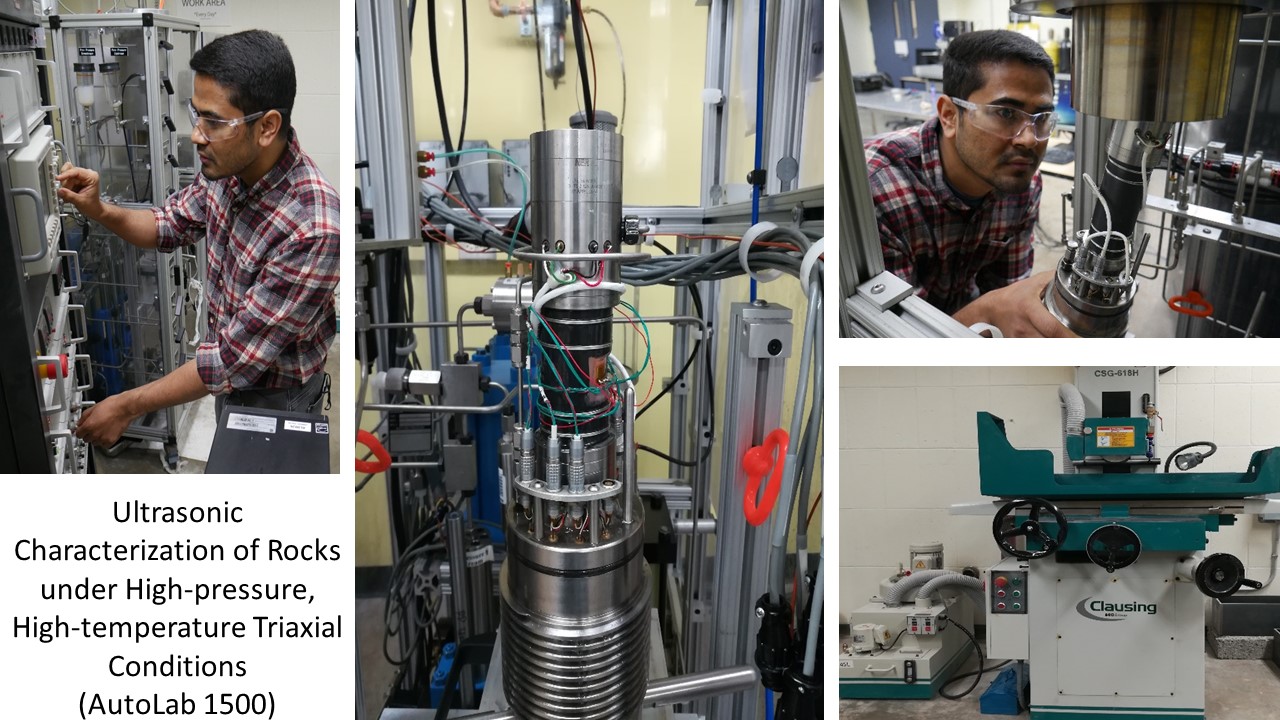
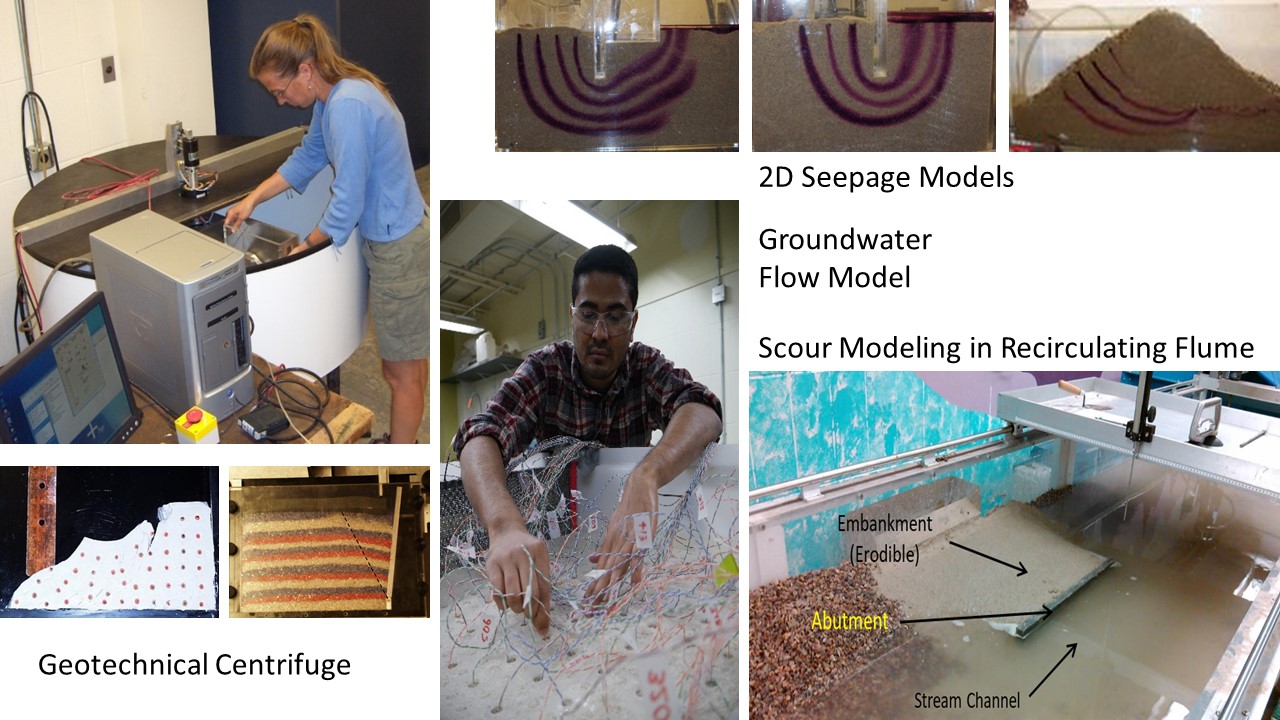
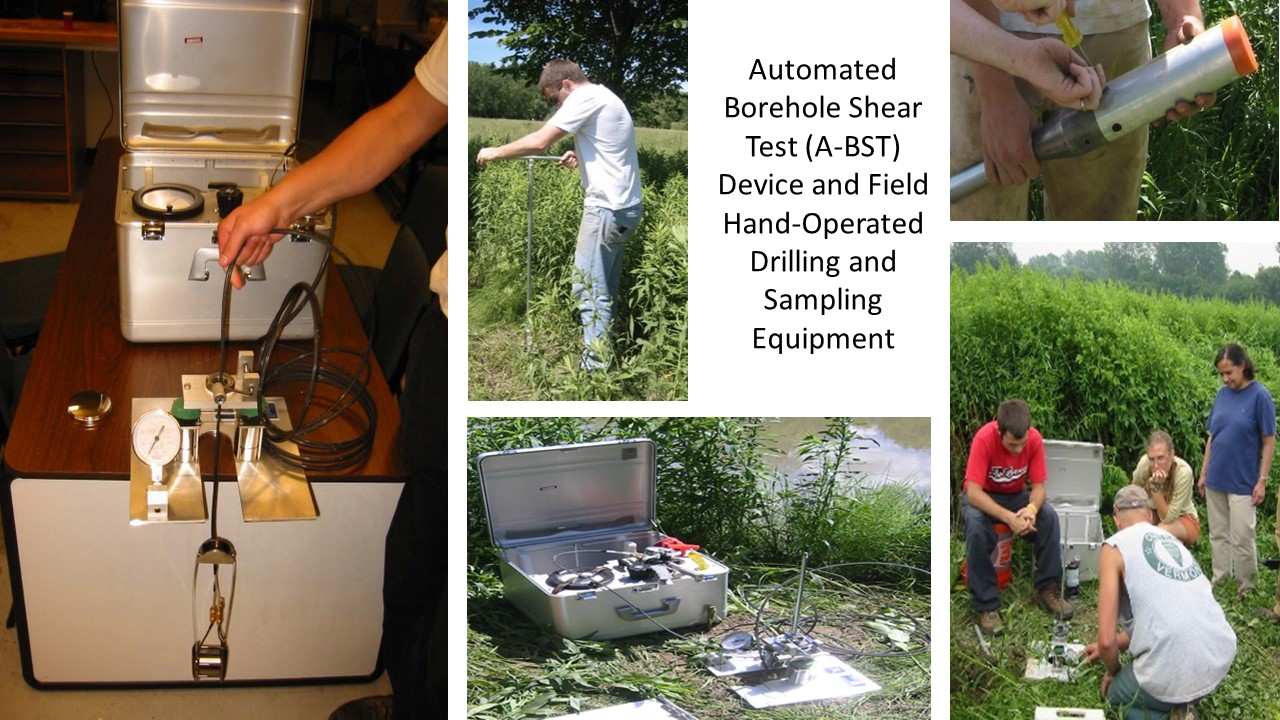
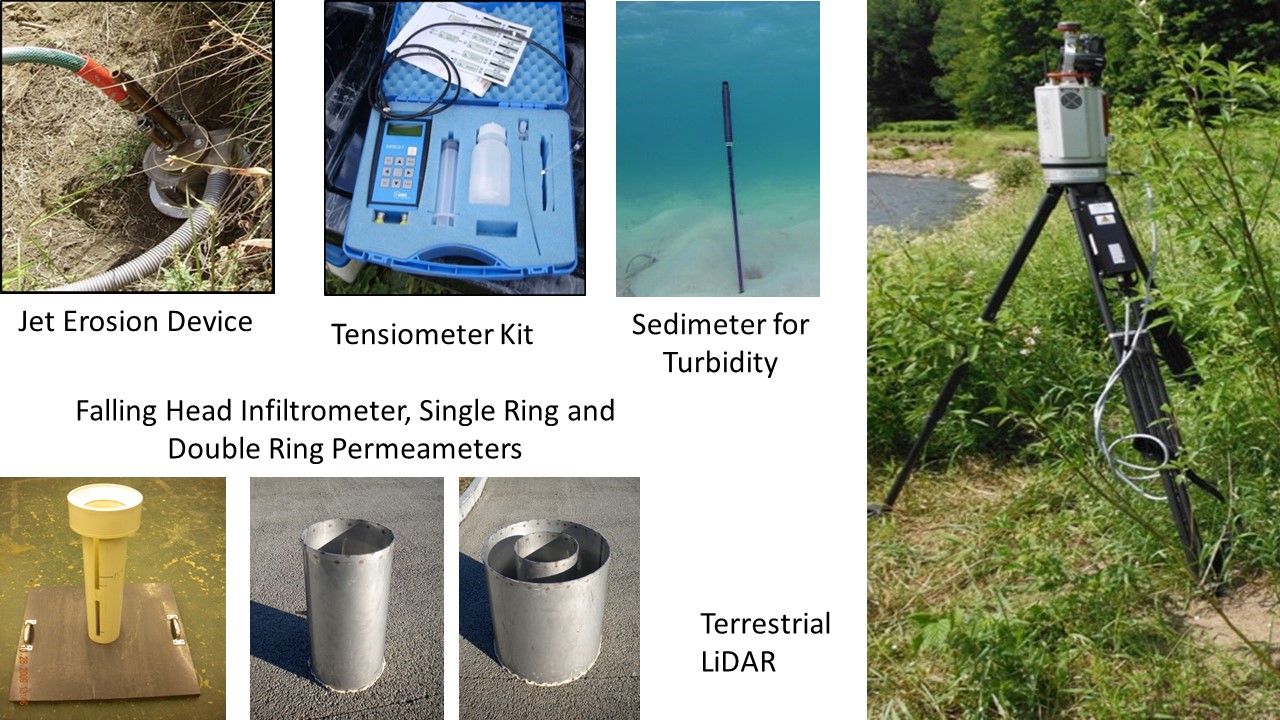
Current Research Projects
Soil Liquefaction
A series of projects on soil liquefaction has been underway in my research group over the years. We investigated the effects of fines on the shear wave velocity and liquefaction resistance of sands, and the manner in which they affect the simplified method and fines correction factors currently used in practice. This was done through an extensive experimental program involving cyclic triaxial tests with bender elements. In recent years, I have had two NSF projects on quantifying and modeling evolution of the strength of liquefying soil including its residual strength. These projects have been in collaboration with UNH and U. of Illinois at Urbana-Champaign. Geotechnical centrifuges at the U. of Colorado at Boulder and the U. of California at Davis have been used for this research. It was envisioned that the shear strength of liquefying sand can be measurable in-flight in a seismic geotechnical centrifuge model using a thin coupon (plate) pulled horizontally through the soil model. The large strains and strain rates associated with liquefaction flow failures would thus be simulated by moving the coupon relative to the sand, through and after the shaking until the excess pore pressures dissipate. Computational fluid dynamics (CFD) modeling is being used to analyze the centrifuge test results.
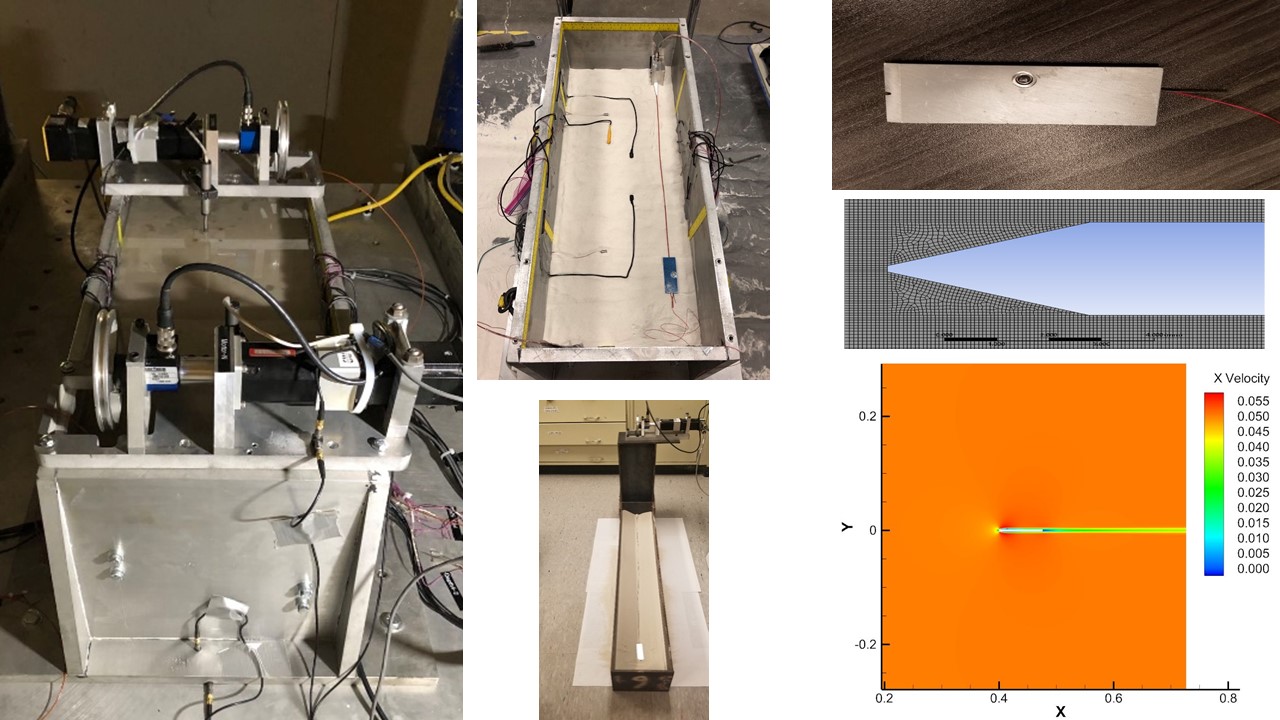
Bridge-Stream Network Modeling
The interactions among rivers, hydraulic structures and the surrounding hydrogeological features are not well-established or understood at the river network scale. Studies are often focused on a single structure and does not consider the cascading impacts up- and downstream. This is complicated by the fact that specific structural or hydrogeological features may attenuate and/or intensify hazards on the network scale. To quantify the dynamic interactions between a river and its surrounding infrastructure under high-risk transient conditions, 2D unsteady hydraulic models developed for three Vermont rivers ranging from very low to high gradients, are used to analyze bridge-stream interactions. This research is evaluating a number of flood mitigation strategies such as bridge widening, lowering of approaches and adding culverts in an attempt to identify structural and hydraulic parameters for a risk assessment at the bridge-stream network level. This research is supported by the USDOT via Transportation Infrastructure Durability Center and the Vermont Agency of Transportation.
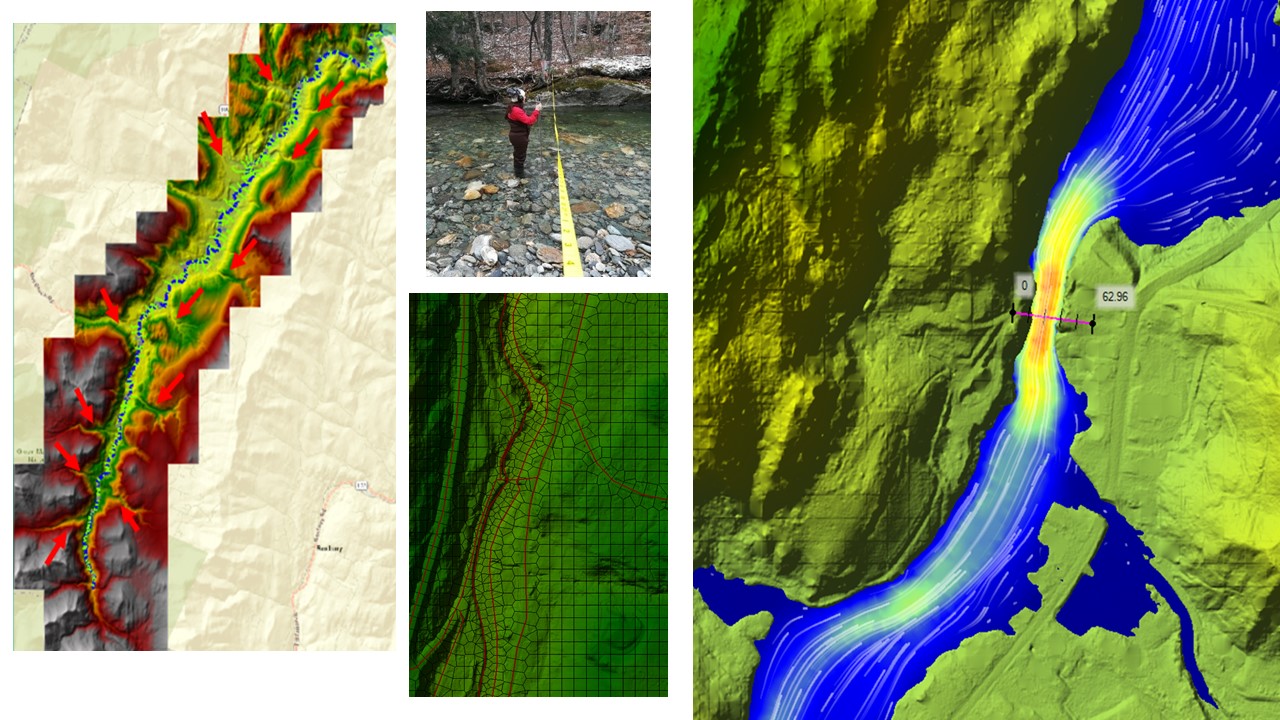
Crushed Recycle Glass
“Sand borrow” is a free-draining granular material most commonly used as a subbase course in pavements to reach a required frost depth protection. This critical construction material is becoming increasingly scarce, and therefore, expensive. Crushed recycled glass or processed glass aggregate (PGA) is a sand borrow-like material that has a high potential to replace sand borrow and other hig-quality fill in applications where free-draining behavior is desired (e.g. retaining wall backfill, drains). The current specifications in our region however prevent widespread use of PGA mostly because of the unclear guidance on the deleterious material content allowance, specifically paper content. The overarching goal of this project is therefore to catalyze the use of PGA as a substitute for increasingly scarce sand borrow material in transportation projects in Vermont, in New England, and beyond. The project not only alleviates the scarcity of sand borrow material faced by transportation projects, but also promotes sustainability by reducing glass waste going to landfills, a win-win for the transportation sector and solid waste facilities. This research is supported by the USDOT via Transportation Infrastructure Durability Center, the Vermont Agency of Transportation, and Chittenden Solid Waste District.
Select Past Research Projects
Prediction and Mitigation of Scour Damage to Bridges
Over 300 Vermont bridges were damaged in the 2011 Tropical Storm Irene and many experienced significant scour. Successfully mitigating bridge scour in future flooding events depends on our ability to reliably estimate scour potential, design safe and economical foundation elements accounting for scour potential, design effective scour prevention and countermeasures, and design reliable and economically feasible monitoring systems, which served as the motivation for this study. This project sought to leverage data on existing Vermont bridges and case studies of bridge scour damage, and integrate available information from stream geomorphology to aid in prediction of bridge scour vulnerability. Tropical Storm Irene’s impact on Vermont bridges was used as a case study, providing damage information on a wide range of bridges throughout the State. This research was funded by the Vermont Agency of Transportation.
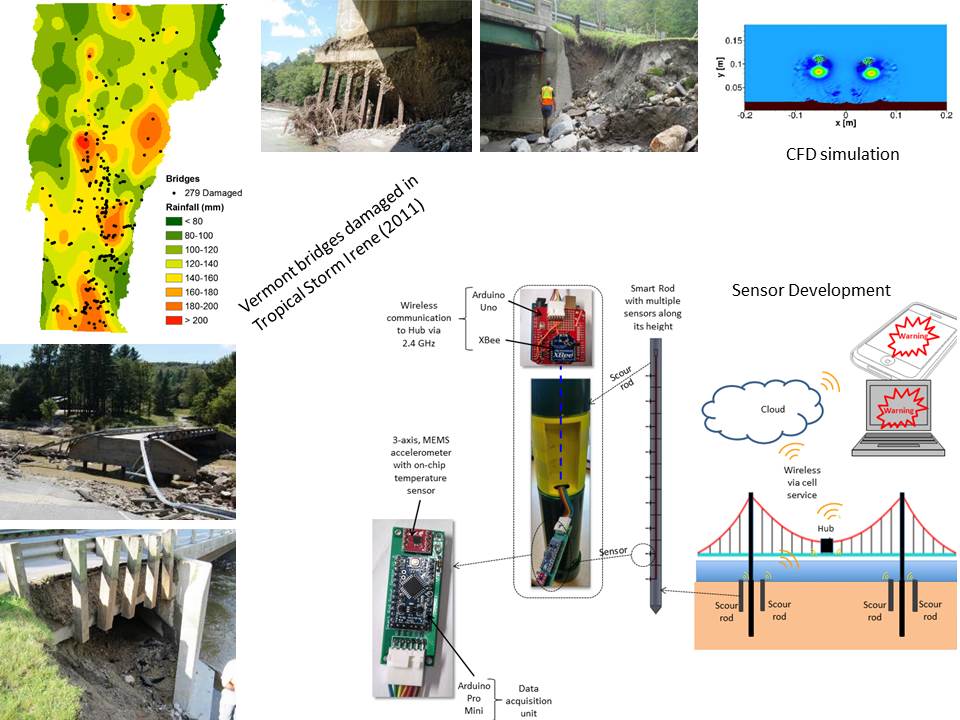
Select publications from this research:
Anderson, I., Hanley, J., Rizzo, D. M., Huston, D. R., and Dewoolkar, M. M. (2020), “Evaluating damage to Vermont bridges by Hurricane Irene with multivariate bridge inspection and stream hydrogeologic data,” Journal of Bridge Engineering, 25(10), https://ascelibrary.org/doi/10.1061/%28ASCE%29BE.1943-5592.0001603.
Anderson, I. A., Rizzo, D. M., Huston, D. R., and Dewoolkar, M. M. (2017), “Analysis of bridge and stream conditions of over 300 Vermont bridges damaged in Tropical Storm Irene”, Structure and Infrastructure Engineering, 13(11), 1437-1450, http://dx.doi.org/10.1080/15732479.2017.1285329.
Anderson, I., Rizzo, D. M., Huston, D. R., and Dewoolkar, M. M. (2017), “Stream power application for bridge-damage probability mapping based on empirical evidence from Tropical Storm Irene”, Journal of Bridge Engineering, 22(5), http://ascelibrary.org/doi/10.1061/%28ASCE%29BE.1943-5592.0001022.
Brand, M. W., Dewoolkar, M. M., and Rizzo, D. M. (2017), “Use of sacrificial embankments to minimize bridge damage from scour during extreme flow events,” Natural Hazards, 87(3), 1469-1487. https://link.springer.com/article/10.1007/s11069-017-2829-z.
Howard, L.J., Anderson, I. A., Underwood, K., Dewoolkar, M. M., Deschaine, L.M., and Rizzo, D. M. (2016), “Heuristic assessment of sensitivity using differential evolution: case study for linking floodplain encroachment and bridge scour,” Environmental Systems Research, 5(20), DOI: 10.1186/s40068-016-0071-4, https://link.springer.com/article/10.1186/s40068-016-0071-4.
Contaminant Transport in Building Materials
We studied contaminant transport through building materials using innovative state-of-the-art techniques such as X-ray tomography, surface permeability mapping and fluorescent confocal microscopy to quantify geomorphic structures of building materials such as sandstone, limestone, concrete and brick. A numerical model was calibrated using the above data and physical transport experiments.
This study supported an overarching goal of understanding fate and transport of chemical agents in porous materials used in heritage and essential facilities, so appropriate decontamination strategies could be developed. The results are also relevant to building contamination from fires and environmental pollution, which continues to be a serious and expensive problem rendering buildings unusable for long periods of time. This research was funded by the Los Alamos National Laboratory and Defense Threat Reduction Agency.
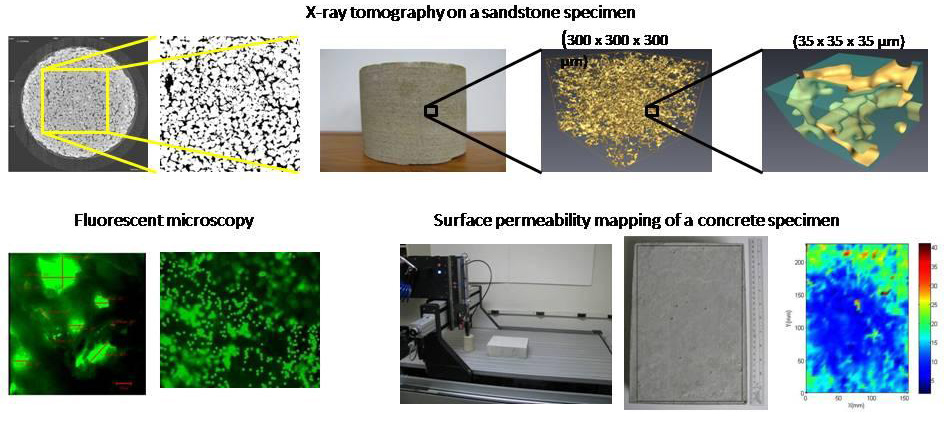
Select publications from this research:
Grover, D., Savidge, C. R., Townsend, L., Rosario, O., Hu, L.-B., Rizzo, D. M., and Dewoolkar, M. M. (2016), “Surface permeability of natural and engineered porous building materials”, Construction and Building Materials, 112, 1088-1100. http://dx.doi.org/10.1016/j.conbuildmat.2016.02.193.
Hu, L., Savidge, C., Rizzo, D., Hayden, N. Hagadorn, W., and Dewoolkar, M. (2013), “Commonly used porous building materials: geomorphic pore structure and fluid transport”, ASCE Journal of Materials in Civil Engineering, 25(12), 1803-1812. 10.1061/(ASCE)MT.1943-5533.0000706.
Savidge, C. R., Hu., L. B., Hayden, N. J., Rizzo, D., and Dewoolkar, M. M. (2008), “Variability in surface permeability of porous building substrates and their implications on transport of agents”, Chemical and Biological Defense Physical Science and Technology Conference, New Orleans, November.
Hu, L. B., Savidge, C. R., Brownell, M., Hayden. N. J., Rizzo, D., and Dewoolkar, M. M. (2008), “Prediction of agent transport in porous building materials”, Chemical and Biological Defense Physcial Science and Technology Conference, New Orleans, LA, November.
Streambank Erosion and Failure
Streambank erosion is recognized as one of the most important nonpoint sources of sediment and phosphorus entering streams, rivers, and lakes, and thus one of the largest contributors to the impairment of surface water quality and aquatic habitat. This project was initially funded by the US Geological Survey – Vermont Water Resources & Lake Studies Center and the Vermont Agency of Natural Resources, and was in collaboration with Prof. Paul Bierman of the Geology Department. We combined many concepts of soil mechanics and geology to gain fundamental understanding of the mechanics of riverbank instability and the source of sediments in streams contributing to increasing phosphorus levels in Lake Champlain. Using in-situ and laboratory testing of streambank soils, determining soil erodibility, continuous remote monitoring of embedded instrumentation, and transient flow and slope stability modeling, we attempted to understnd what makes some banks stable and other banks fail over both time and changing river and groundwater conditions. Additionally, a proof-of-concept study determined whether the rare isotope, Beryllium-10 (10-Be), can be used to fingerprint the source of fine-grain, particle reactive sediment transported in the streams and deposited in Lake Champlain. A part of this research was featured on Vermont’s Channel 3 news. This research was continued with funding from VT EPSCoR’s Research on Adaptation to Climate Change grant. Recent work included use of unmanned aircraft systems to monitor river banks and corridors, which was in collboration with Professors Donna Rizzo, Jeff Frolik, Jarlath O’Neil-Dunne, Scott Hamshaw and Kristen Underwood.
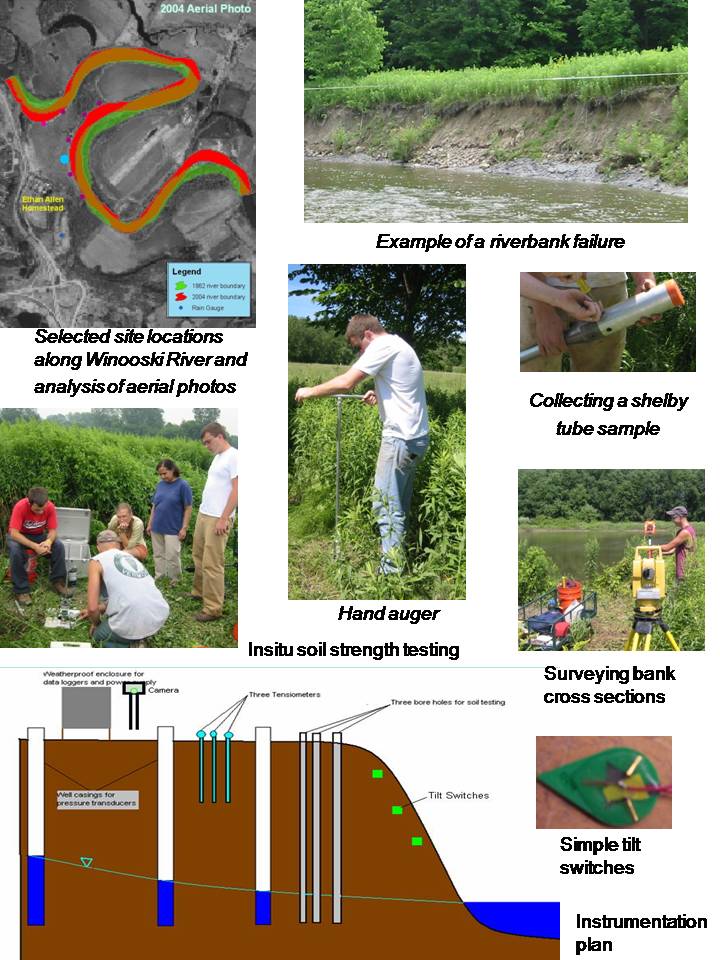
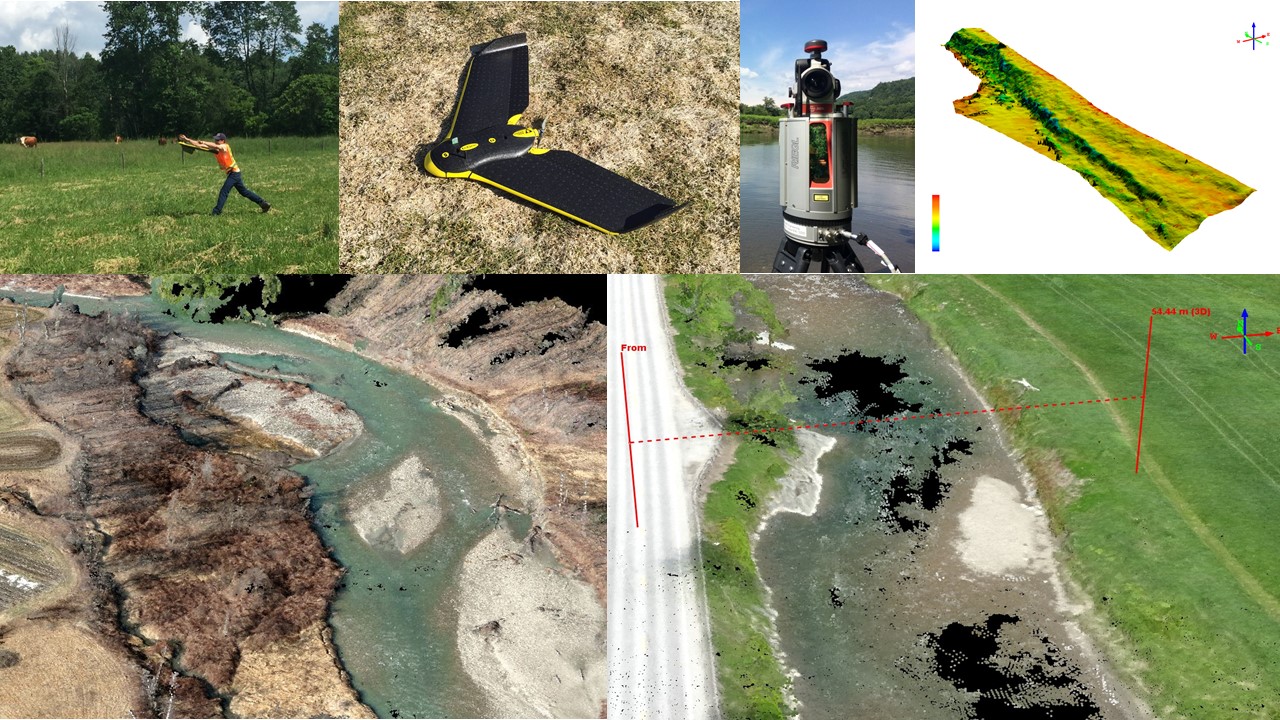
Select publications from this work:
Hamshaw, S. D., Engel, T., Rizzo, D. M., O’Neil-Dunne, J., and Dewoolkar, M. M. (2019), “Application of unmanned aircraft system (UAS) for monitoring bank erosion along river corridors,” Geomatics, Natural Hazards and Risk, 10:1, 1285-1305. https://doi.org/10.1080/19475705.2019.1571533.
Hamshaw, S. D., Dewoolkar, M. M., Schroth, A. W., Wemple, B. C. and Rizzo, D. M. (2018), “A new machine-learning approach for classifying hysteresis in suspended-sediment discharge relationships using high-frequency monitoring data,” Water Resources Research, doi: 10.1029/2017WR022238.
Underwood, K. L., Rizzo, D. M., Schroth, A. W., and Dewoolkar, M. M. (2017), “Evaluating spatial variability in sediment and phosphorous concentration-discharge relationships using Bayesian inference and self-organizing maps,” Water Resources Research, 10.1002/2017WR021353.
Hamshaw, S. D., Bryce, T., Rizzo, D. M., O’Neil-Dunne, J., Frolik, J., and Dewoolkar, M. M. (2017), “Quantifying streambank movement and topography using unmanned aircraft system photogrammetry with comparison to terrestrial laser scanning,” River Research and Applications, 33, 1354-1367.
Borg, J., Dewoolkar, M. M., and Bierman, P. (2014), “Assessment of streambank stability – a case study”, Geo-Congress 2014 Technical Papers: pp. 1007-1016.